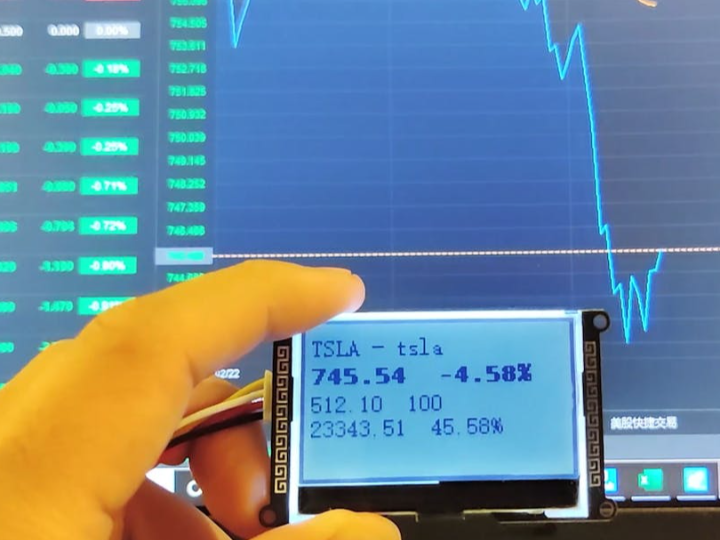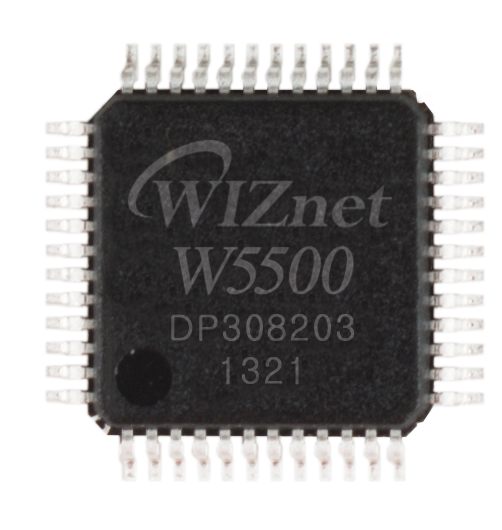Monitor your stock with Arduino Ethernet PoE board
DIY stock tracker using Seeed's Squama Ethernet & I2C_LCD to view real-time stock info, easy setup, Arduino powered. Ideal for tech & finance enthusiasts.

In the ever-evolving world of technology and finance, the intersection between hardware innovation and financial management tools has never been more exciting. The advent of do-it-yourself (DIY) projects that integrate sophisticated technology to track and manage personal investments represents a significant leap forward for enthusiasts and beginners alike. One such pioneering project involves creating a stock tracking device using Seeed Studio's Squama Ethernet - Arduino W5500 Ethernet Board with Power over Ethernet (PoE) and the Seeed Studio I2C_LCD. This innovative endeavor not only democratizes access to real-time financial data but also showcases the versatility and power of WIZnet's products in facilitating smart, connected solutions for everyday tasks.
Introduction to the Stock Tracking Device
The DIY stock tracking device is a testament to the ingenuity of modern hardware and software integration. Designed for individuals with a keen interest in monitoring their stock holdings, this device simplifies the way investors access their financial information. Through a compact, easily readable display, users can view up-to-the-minute details about their investments, including stock prices, performance metrics, and overall portfolio health. This project, suitable for beginners, provides full instructions and can typically be completed within four hours, making it an accessible and rewarding endeavor for those looking to merge their interests in technology and finance.
Why Choose Seeed Studio Squama Ethernet with WIZnet Technology?
At the heart of this project lies the Seeed Studio Squama Ethernet board, powered by WIZnet's W5500 Ethernet chip. This choice is far from coincidental. WIZnet's W5500 chip is renowned for its high-speed, stable internet connectivity, and when combined with the Arduino platform, it opens up a plethora of possibilities for networking projects. The Squama Ethernet board's support for PoE is particularly noteworthy. It allows the device to be powered directly through the Ethernet cable if the router supports PoE, eliminating the need for a separate power supply and streamlining the hardware setup. This feature not only enhances the project's aesthetic and practical appeal but also underscores the importance of selecting high-quality components that offer both functionality and convenience.
Leveraging Seeed Studio I2C_LCD for User-Friendly Displays
Visual representation of data plays a crucial role in the usability and effectiveness of any device aimed at displaying real-time information. The Seeed Studio I2C_LCD is chosen for its simplicity and efficiency, providing a clear, concise display that allows users to quickly grasp their portfolio's current state. The integration of this LCD with the Squama Ethernet board through the I2C interface is straightforward, ensuring that even those new to hardware projects can achieve professional results.
Project Features and Benefits
This stock tracking device goes beyond mere novelty; it serves as a practical tool for investors. Key features include:
- Real-time Stock Information: Access live data on individual stock performance, including price changes, holdings cost, and the number of shares owned.
- Overall Position Overview: Get a snapshot of your total assets, day's profit and loss, and total yield, enabling informed decision-making.
- Ease of Setup and Use: The hardware connection process is streamlined, and software setup involves simple modifications to the demo code provided on GitHub.
Hardware and Software Setup
The beauty of this project lies in its simplicity. Connecting the I2C_LCD to the Squama Ethernet's I2C interface, and then connecting the board to a router via the RJ45 interface, are the primary steps. For those with PoE-enabled routers, the convenience is further enhanced by eliminating the need for an external power source. On the software front, the project utilizes Arduino for development, with a comprehensive guide available on the Squama Ethernet wiki. Users are encouraged to download the demo code, make the necessary adjustments to stock codes, numbers, and names, and upload it to the Squama Ethernet board for a fully functional stock tracking device.
Conclusion
The integration of Seeed Studio's Squama Ethernet board with WIZnet's W5500 Ethernet chip in creating a DIY stock tracking device exemplifies the innovative potential at the intersection of technology and personal finance management. This project not only offers a tangible application for monitoring investments but also highlights the reliability, efficiency, and ease of use of WIZnet's products. Whether you are a seasoned investor, a technology enthusiast, or someone curious about the practical applications of networking hardware, this stock tracking device project provides a unique opportunity to explore the capabilities of modern electronics in enhancing our daily lives.

